I confess to a love-hate relationship with police procedurals—be they novels, TV shows, or movies. After 22 years wearing a gun and badge, I’ve followed the shifting image of the female police officer, detective, federal agent, and other women with a badge with interest. For the most part, the fictional representation of women on the job has mirrored my actual experience. But that’s not necessarily a good thing.
When I first joined the force in 1988, I had dared to cross another type of thin blue line. On my first day at the precinct after graduating from the police academy, a grizzled old patrol officer walked up to me, folded his arms across his chest, and said, “Women have no place in law enforcement.” He spun on his heel and stalked off. That was my official welcome to the squad.
The public response when I showed up on the scene varied. Some people refused to take me seriously, preferring to wait for a “real policeman” to arrive. Others had no idea what to call me. “Do I call you a policewoman, or a police lady?” Stifling a groan, I plastered on a smile and replied, “Police officer will do.”
I shouldn’t have been surprised. After all, according to the famous intro to an iconic TV series, Charlie’s Angels had to leave the LAPD to work as PIs in the face of rampant discrimination on the force. The fact that TV producers considered this a viable way to introduce the show’s premise demonstrates the zeitgeist of the era—mainly that women couldn’t be taken seriously as law enforcement officers.
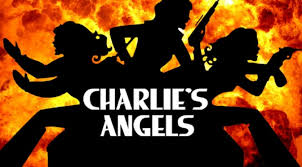
Fortunately, the treatment of women with a badge, both fictional and real, has improved dramatically. Some characters—in print and on the screen—have made an impression. Angie Dickinson as Pepper Anderson on the show Police Woman had to undress and get in the shower a lot. I guess she got sweaty chasing all those bad guys. But hats off when Fargo came out in theaters in 1996. Featuring a very pregnant female police chief who solves a particularly grisly murder was a gamble that paid off. Audiences loved Marge Gunderson, whose unassuming brilliance rivaled that of Columbo.
While television and cinema struggled with how to portray female cops, novels did the same. In the wake of earlier pulp fiction stories where “dames” were either victims or femme fatales, a new breed of woman emerged. In 1988, Thomas Harris penned Silence of the Lambs, the 2nd book involving his infamous villain, Hannibal Lecter. This time, however, Hannibal was pitted against female FBI Agent Clarice Starling. When the movie came out, I was thrilled with Jodie Foster’s portrayal. In fact, years later when I ran the famous FBI obstacle course in Quantico, I pictured her character running next to me.
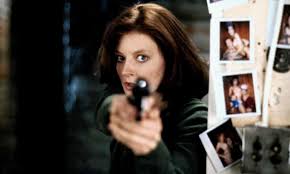
In the same period, remarkable for many reasons, was Eleanor Taylor Bland’s 1992 introduction of Det. Marti McAlister in Dead Time. A Black female police officer raising two children on her own (she was widowed) broke many barriers at the time and is still unusual in popular crime fiction.
The new millennium brought a fresh wave of police female leads in novels. Many women writers (including Rogue Women Writers) created compelling examples of strong women in law enforcement who could hold their own in a tough environment. Readers went wild for their characters, and I rejoiced in the change as a reader before I became a writer.
Even prominent male authors such as James Patterson joined the growing trend. After its inception in 1st to Die, his Women’s Murder Club series has been a huge hit, now on its 22nd installment. Det. Lindsay Boxer, unlike many male fictional detectives, is not an emotionally unavailable loner and collaborates with her colleagues to get the job done.
Now that we’ve begun our third decade into the new millennium, it’s illuminating to revisit the television female cop persona. In shows such as Law & Order, among others, women on the force seem to be having a lot more fun as well as hard-nosed action. They get to be tough but sexy at the same time. They are allowed to actually shoot people, get in fights, and yes, get their butts kicked sometimes. The successful show has been running for over thirty years, resulting in more spin-offs than any other crime drama.
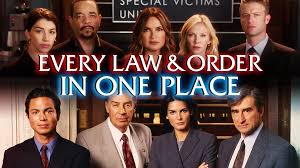
I was always bothered by earlier incarnations of the female officer/detective who had mad ninja skills and was able to take out a 250-pound linebacker without mussing her hair. That’s a load of caca. I speak from experience. When a guy that big doesn’t want to go to jail, it’s best to find another way to lock him up and use force as a last resort.
In general, I like the current depiction of fictional women in law enforcement. They more closely represent the real deal, with a few exceptions. One of which is wardrobe. Back when I worked in uniform patrol in the early 90’s, an elderly lady asked me why every female police officer she saw in real life was flat-chested. I’m not kidding. This really happened. I explained to her that we were every bit as curvy as our civilian counterparts, but we wore ballistic vests under our shirts that gave us the general profile of a fire hydrant.
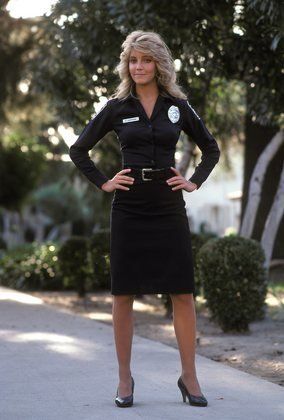
Turns out she was comparing me to Heather Locklear in TJ Hooker because I also had to explain why real uniformed cops don’t have long locks flowing down their backs in feathery waves. She shook her head sadly as we parted, glad that I had cleared these highly vexing issues up for her but lamenting my department’s refusal to allow me to “be more feminine” because she thought I could be pretty if given half a chance. I ended up writing about the reason behind this regulation in The Cipher, and readers have told me they found it both chilling and informative.
Perhaps the impromptu conversation with the curious lady was emblematic of the time, but a part of me does wonder if we have changed enough. Real female cops come in all sizes, shapes, colors, and ethnicities. We’re seeing a bit more diversity in fictional portrayals, which is a good thing. Both of my series feature Latina law enforcement officers, one an FBI agent, and the other a Homicide detective. They’re both strong, street-smart, complicated, and have a metric ton of backstory, which I enjoy delving into a bit further in each book.
As a law enforcement professional who is a woman, I strive to do justice to my sisters in blue when I write. As an author, I have the opportunity to create stories that mirror life and three-dimensional characters readers can feel on the page.
By the way, that grizzled veteran cop who told me, “Women have no place in law enforcement” on my first day as a police officer…ended up under my command when I became a captain.
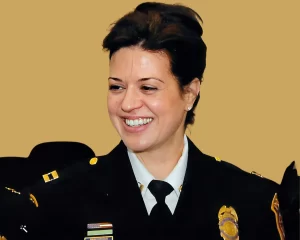
Question for blog readers: Do you have a favorite cop show, movie, or book series that you feel accurately portrays female law enforcement officials?
















































Oh snap! On that grizzled veteran. That must have smarted. 🙂
I have the same reactions to CSIs portrayed on screen, but it’s never as bad for me, because all the action is over by the time I get there. If some large guy moved toward me in a threatening manner I’d have no choice but to run like hell in the opposite direction. So I can just feel mild annoyance that female CSIs on TV wear low cut, tight designer sweaters and sometimes pick up evidence without photographing it first. (Are you NUTS?)
For portrayals of female cops, I recommend Lisa Gardner’s books. I’ve never warmed up to Dee Dee Warren, somehow, but I’ve particularly liked many of her other creations.
My favorite female cop duo is and always will be “Cagney & Lacey”. That was groundbreaking TV.
This was great, Isabella! And it’s always refreshing to glimpse the “real deal” when reading your novels. I’m a fan of Tess Gerritsen’s Rizzoli and Isles (cop and medical examiner make a great blend). The TV series was entertaining, too, although it bugged me when they wore designer high heels to crime scenes.
Rizzoli and Isles also my faorvite.
Great blog, love the line about being shaped like a fire hydrant. We’ve come a long way since Heather Locklear. (Are you kidding me?)
I like all the women cops on tv., especially Athena on 911. She’s a class act.
My favourite female cop on TV will always be Olivia Bennett on Law and Order: SVU. They’ve done a splendid job of giving her a character arc and now with the crossover with bringing Stabler back to Organized Crime and the “will they or won’t they?” question, she’s even better. She’s earned everything she’s achieved and I think she’s a great character example.
I’m in awe of Isabella’s 22 years as a “police officer” engaging in dangerous activities 24/7 — your experience shines through in your terrific novels. Thinking about female enforcement types on TV shows, one of my favorite actresses is Perdita Weeks who plays “Higgins” on the (new) MAGNUM PI on CBS. In the show she’s a former MI6 agent now in Hawaii working as a private investigator who is filmed in incredible fight scenes, taking down the “bad guys” with fists, feet and an occasional gun or two. That show was reportedly on the list of possible ones to be retired, but it came in as one of the two top shows viewers voted to keep. (As reported in today’s paper) Hope it returns. Thanks for a great blog!!!